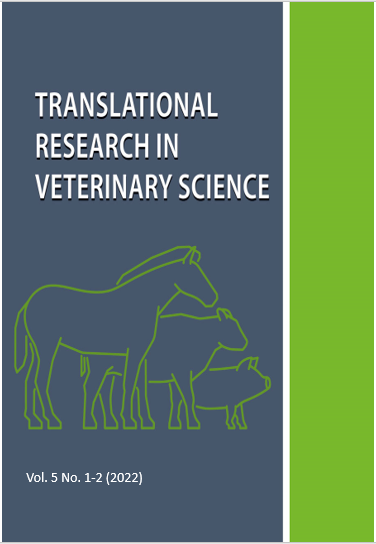REPRODUCTIVE MANAGEMENT AND ASSISTED REPRODUCTION TECHNIQUES IN FELIDS
DOI:
https://doi.org/10.12775/TRVS.2022.002Keywords
tiger, leopard, ARTAbstract
At present, the International Union for the Conservation of Nature (IUCN) lists 25 of the 38 known cat species as “vulnerable” or “endangered” in, at least, some part of their natural habitat. Some large felid species, such as the Sumatran tiger (Panthera tigris sumatrae) or the Northern Chinese leopard (Panthera pardus japonensis), are critically endangered, with more animals living in captivity and isolated protected landscapes than in the wild. Proper breeding management is essential to keep and improve healthy wildlife populations, both in situ and ex situ. Therefore, in addition to traditional measures, such as monitoring of threatened species, increasing the number and size of protected areas, relocation of individuals, and exchange of breeders, captive management and ex-situ breeding programs play an important role in the conservation of these species. However, many felids reproduce poorly in captivity and most captive populations have limited genetic diversity and a tendency for inbreeding, which may lead to reproductive anomalies and increased risk of extinction. In this regard, assisted reproduction technology (ART) has been advocated as a new tool in wildlife breeding and conservation. The application of advanced techniques such as gamete cryopreservation, artificial insemination, in vitro fertilization, or embryo transfer could provide a faster diversification and redistribution of genetics, a reduction of disease transmission, and the independence from translocation of animals for breeding purposes.
Although these benefits would enhance our efforts in wildlife conservation and breeding, to date, relatively little has been researched into this field and ART success in non-domestic felids remains, overall, lower than 25%. In this talk, we will review the current methods that can be used to monitor the reproductive physiology of non-domestic feline species and the actual applicability of assisted reproduction techniques into this species conservation.
Downloads
Published
How to Cite
Issue
Section
License
Copyright (c) 2022 ISABEL CALLEALTA

This work is licensed under a Creative Commons Attribution-NoDerivatives 4.0 International License.
Title, logo and layout of TR in VS are reserved trademarks of TR in VR.
Stats
Number of views and downloads: 28
Number of citations: 0



